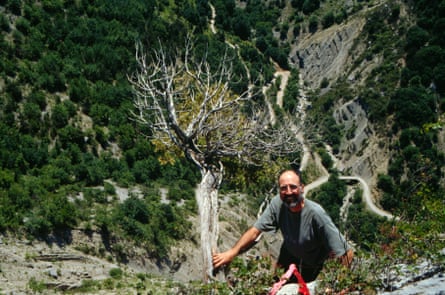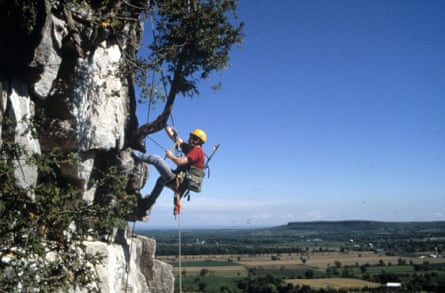I’ll be 75 in March, and we old people often reflect on why certain things happened in our lives. This is very personal, but I was tall and skinny as a kid – I was always the one who was beaten up at school. The only refuge I had was in plants and bugs, and animals in general.
Nothing in nature ever tried to “get me” – even predators. They weren’t after me. I always felt a sympathy with critters that were under attack or vulnerable. Your personality guides your research, and this got me interested in the idea of “harshness” in environments.
This would eventually lead me to become a professor of biology at the University of Guelph, and to discover the most ancient and least-disturbed forests in eastern North America – perhaps even the oldest in North America.

I didn’t begin by looking at trees. The organisms I first worked on were the most marginalised and misunderstood plants in the world: lichens. Many live in Arctic tundra where the wind, snow and cold attack vegetation all the time, making things tiny and stunted. And yet, they are surviving in their own little paradise because no one else bothers them.
When I got my PhD, I decided to work in a habitat that would be as brutal as the Arctic tundra, and that’s when the idea to work on the Niagara Escarpment kicked in. There were these stunted, groggy-looking organisms up there and no one had ever considered them worth studying. People called them “rock scum”. But from the point of view of someone who is sympathetic to critters getting beaten up, this was a beautiful habitat; I wanted to study it.
The people in my lab assumed Europeans had clear-cut all of southern Ontario, so we didn’t expect to find ancient trees anywhere. But then we found these tiny, ancient trees clinging on to a thin sliver of harsh habitat.
When we found our first tree that was more than 1,000 years old I thought, “you have got to be kidding”. I had goosebumps. It was like a lightning bolt hitting – it put this forest into a completely different category.
So many people had walked past this and just assumed there was nothing there. It’s within sight of the busiest highway in North America, the 401, and one of the largest cities, Toronto. It was a shock to find them in such an industrialised urban setting.

We began research to find out the limits of antiquity of the trees in this forest. One was more than 1,800 years old, although it had died a long time ago.
The next question was: is the presence of this ancient forest on these cliffs unique to Ontario? There are lots of beautiful limestone outcrops in the south of France so I contacted researchers in Montpellier and said we’d like to come and study them. Again, they told me there was “nothing there”. Yet they ended up finding one tree that had started to grow before the Romans left France. That made headlines in Le Figaro. This tree had watched the Romans leave! They are the oldest living plants in France.
We found there were ancient forests on all the cliffs in the south of France, and then we ended up making similar discoveries in the US, New Zealand, Germany and England. It turned out these tiny ancient forests are everywhere. Cliffs have now been recognised as one of the hotspots of biodiversity globally.
It was 1988 when the media first took an interest in the ancient forests. It’s now 2023, and it has never stopped. It links to the whole question of human life – when you work on something that’s 1,000 years old, suddenly you feel smaller and realise your role in the universe is not as grand as you’d thought.

We humans place great value on productivity. What I’ve learned philosophically about life from the ancient trees is peace and joy can be found in the slow, the cautious and the careful, as much as it can be in the rich and famous.
I have found the ancient forest to be my greatest teacher. The trees have taught me that growth is not necessarily essential or good. If we humans want to be sustained by this planet for ever, we cannot suck it dry. This ancient forest is one place that we haven’t got to – it has survived us by us ignoring it. There’s a way to make the planet infinitely sustainable for us, if we simply ask less of it.
-
As told to Phoebe Weston. Doug Larson is professor emeritus of biology at the University of Guelph in Ontario, Canada. He is an expert on deforestation and regularly contributes to media discussions on the topic of old growth forests. His latest book, written with his son Nick, is called The Dogma Ate My Homework



